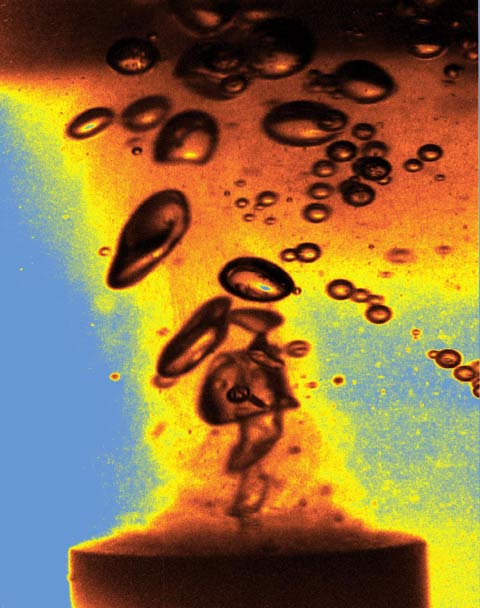Ultrasound Gas Bubbles

When treated with ultrasound, liquids generate gas bubbles of varying shapes. Some of the ultrasound energy is converted into light when the bubbles burst.
Image Credit: K. S. Suslick and K. J. Kolbeck, University of Illinois
Ultrasound treatment uses sound waves with frequencies above the range of hearing for healthy young adults — around 20 kHz. When used on liquids, ultrasound waves cause gas bubbles to form and collapse, as seen above.
Ultrasound doesn't just create bubbles, however. These bursting bubbles also emit light — a form of energy transferred from the sound waves. Called sonoluminescence, this process has been well documented in and out of the lab. Even some animals can generate sonoluminescence when forcefully hitting objects underwater.
More Information:














